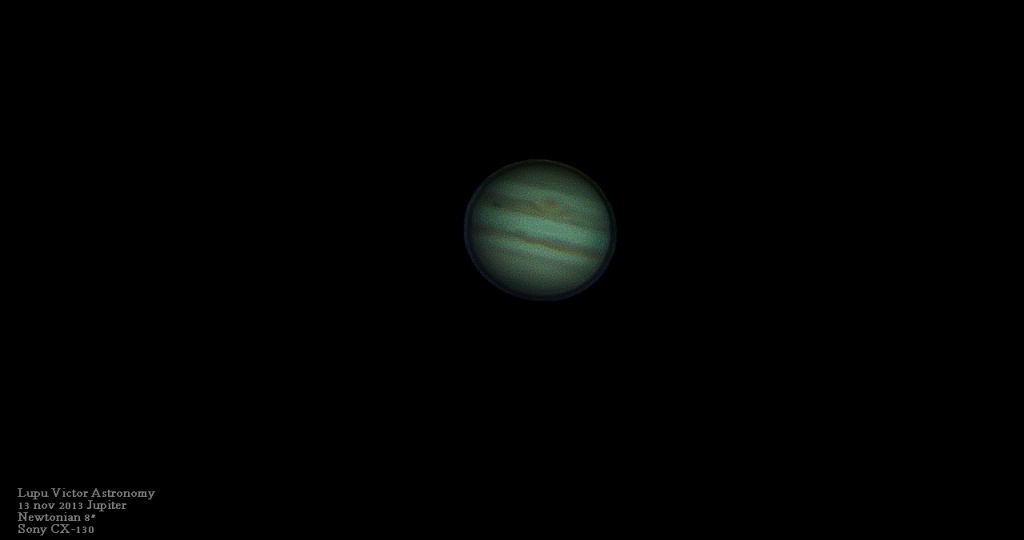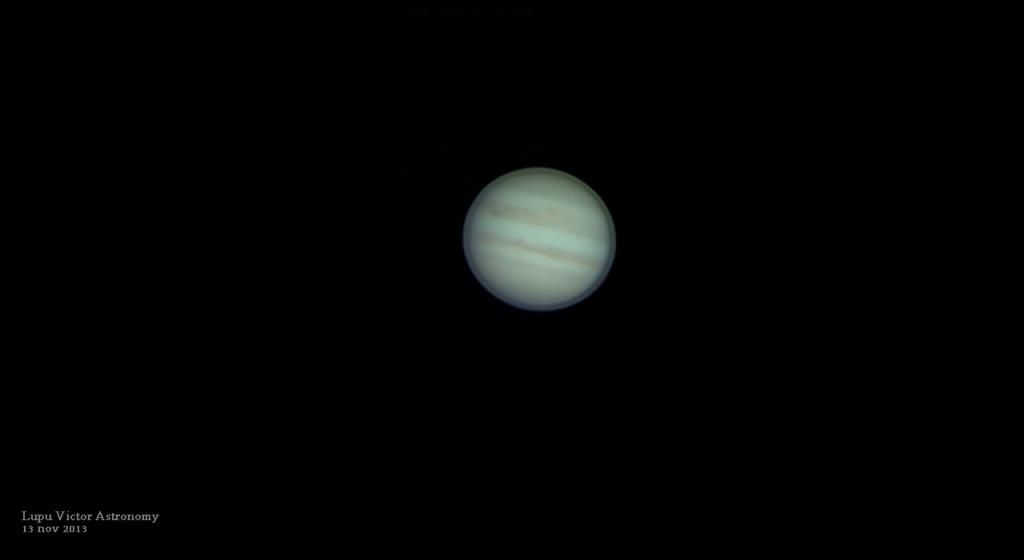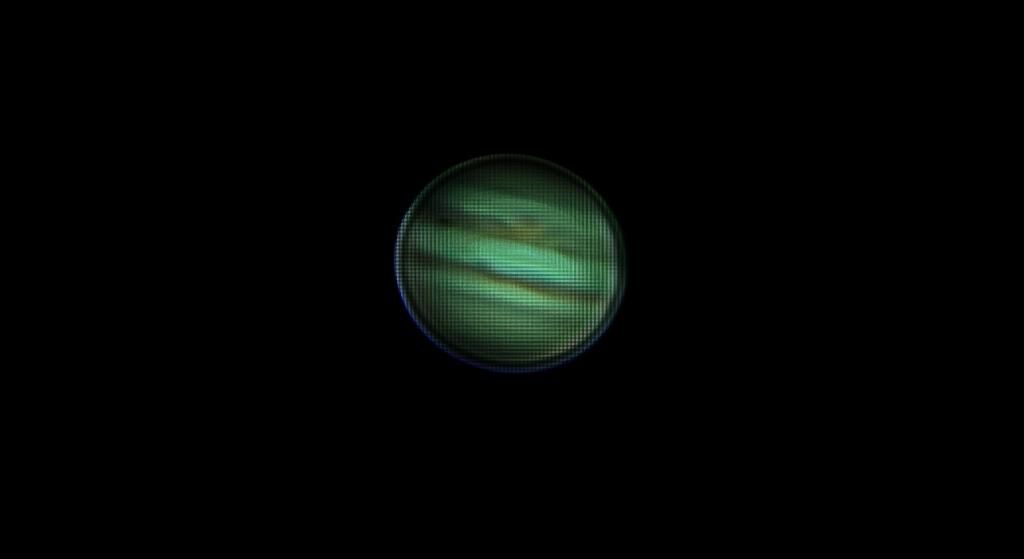 |
| 44 frames, at 95% best quality in Registax. |
 |
| 137 frames, at 95% best quality in Registax. |
 |
| 3267 frames, at 90% best quality in Registax. |
 |
| 3740 frames, at 90% best quality in Registax. |
The "glazed" Jupiter planet, is the second interest to amateur observers through a telescope, after Saturn, in my opinion.
There's so much to say about the largest planet of our Solar System, it would not fit into a single article. In 9 hours and 35 Earth minutes, it makes a rotation around its axis (revolution), being very dynamic compared to our planet which needs 24 hours. In fact, in winter nights which are longer, if you look at the face of Jupiter at 18:00, at 03:00 you see the other side of the planet. I think that if you would film this planet for nine hours and then process the video in Registax, you'll be able to get almost the whole map of the planet in a single picture.
These are, I believe, the most successful pictures of Jupiter since I have this telescope.
One of the four Galilean satellites, Io, is in front of the planet and can be located on planet's disc as a dark point on the left, near the edge.
More images are here.
You can see the video of these images, here.
Planet Jupiter
Distance: 688 150 205 km. (4.60 A.U.)
Lighting: 99.3%
Optics: Celestron C8-Newtonian telescope, 20 mm Plossl, 2x Barlow
Mount: CG5 (EQ5)
Camera: Sony CX130
Filter: no
Date: 11/13/2013, Time: 4:35 to 6:00
Location: Baia Mare, Romania
Processing: FastStone Image Viewer




 Tuesday, January 07, 2014
Tuesday, January 07, 2014
 Unknown
Unknown





 Posted in:
Posted in: 


0 comments:
Post a Comment